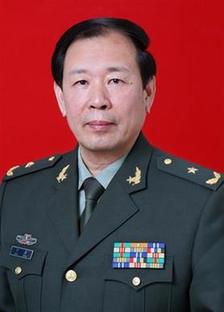Turning the tables on US military perceptions
- By Luo Yuan
 0 Comment(s)
0 Comment(s) Print
Print E-mail China.org.cn, June 7, 2012
E-mail China.org.cn, June 7, 2012
The Pentagon submits to the U.S. Congress an evaluation on China's military strength each year and has done so since the end of the Cold War. The theme of the report is always the same - finding fault with China's military development. After the U.S. State Department released its annual human rights report, Secretary of State Hillary Clinton, said on May 24: "These reports…make clear to governments around the world: we are watching, and we are holding you accountable." Here we also have ten questions which the U.S. should answer and that need the U.S. government to hold accountable.
|
|
|
Luo Yuan, deputy executive of the China Strategy Culture Promotion Association [File Photo] |
1. Which country has the largest and best-equipped military?
In 2011, the U.S. had 1.4 million active troops, including 571,000 ground forces, 529,000 naval forces and 335,000 air force personnel. It also has a reserve force of 853,000 and a civilian force of 803,000. The U.S. army now has 3.091 million personnel (National Guard not included), which makes it indisputably the largest in the world.
The U.S. Army is equipped with 7,900 battle tanks, 7,000 combat vehicles, 9,100 artilleries and about 4,900 aircraft. The navy has 252 naval crafts, including 11 aircraft carriers and 52 nuclear-powered attack submarines. The air force is equipped with 450 intercontinental ballistic missiles and 5,244 aircraft of various types.
2. Which country has the world's biggest military budget?
The Obama administration's defense budget in fiscal year 2011 was 687 billion dollars. When taken with the spending of all agencies directly under the U.S. Department of Defense and on veterans, the total reached 836 billion dollars, accounting for 22 percent of the federal budget.
3. Which country has the most nuclear weapons?
The U.S. and Russia have signed a Strategic Arms Reduction Treaty (New START), however it won't seriously affect America's nuclear deterrent ability. As of September 1, 2011, the U.S. had 1,790 nuclear warheads and has deployed 822 nuclear weapons delivery vehicles. Thirty percent of its strategic bomber force is currently at the second state of alert, and the bombers are capable of being deployed within 32 minutes.
4. Which country is currently involved in the most wars?
2011 is the second consecutive year that the U.S. has provided full-year funding for the wars in Iraq and Afghanistan. The U.S. government has allocated more than 159 billion dollars to its overseas military emergency operations in fiscal year 2011. The average operations and equipment maintenance funds provided to each task force is 210,000 dollars, which is a significant figure by historical standards.
5. Which country arranges the greatest number of combined global military exercises?
Each year, the U.S. holds joint military exercises with other countries. In recent years, the U.S. has intensified and expanded such exercises. It holds hundreds of military exercises every year.
6. Who perceives China as an enemy?
On February 1, 2010, the U.S. Department of Defense released the Quadrennial Defense Review (QDR) which notes: "The increasing importance of China and India suggest an emerging 'multi-polar' great-power balance." The QDR stressed the need to guard against China's military modernization. On February 8, 2011, the U.S. Joint Chiefs of Staff released the 2011 National Military Strategy, which stressed the importance of developing relations with China. It also made clear that the U.S. should pay more attention to the challenge posed by China's military development, especially in the Asia-Pacific region.
7. Who is the target of the U.S.' strategic pivotal shift to the East?
The U.S. stationed 135,300 troops, 618 warplanes and 80 naval vessels in the Pacific region. It stationed 85,700 troops, 290 warplanes and 20 naval vessels in Europe. The 2011 National Military Strategy has made clear that the Asia-Pacific region is America's major focus and that it has two different types of regional strategies and threats. One is for the U.S. to contain and attack and the other requires that it maintain a watching brief. North Korea of the Asia-Pacific and Iran of the Middle East belong to the former category and China falls into the latter.
8. Which country is the object of U.S. air and maritime operations?
The U.S. army believes that the Chinese army has been trying to establish a "forbidden zone" in the second island chain and, as a result, feels that it must take steps to offset the effect of the Chinese military buildup. The U.S. army has developed four different plans to combat the Chinese army.
9. Which country is implementing and preparing for "cyber warfare?"
The U.S. was the first country to publicly use the term "cyber war" and "cyber attack" in its 2010 QDR. On February 5, 2010, the U.S. Army Training and Doctrine Command (TRADOC) approved the army's first official cyberspace operations concept, in which it pointed out that cyber warfare is part of the full spectrum operation, the purpose of which is to obtain and protect information superiority, and put the enemy at a disadvantage.
10. Who is rocking the boat in terms of Sino-US military cooperation?
The U.S. has violated the August 17 communiqué by selling arms to Taiwan. The U.S. military aircrafts and warships have frequently conducted reconnaissance in the East China Sea and the South China Sea. The U.S. Congress has passed discriminatory bills to restrict normal military contacts with China.
The author is deputy executive of the China Strategy Culture Promotion Association.
(This article was first published in Chinese and translated by Li Huiru.)
Opinion articles reflect the views of their authors, not necessarily those of China.org.cn.







Go to Forum >>0 Comment(s)